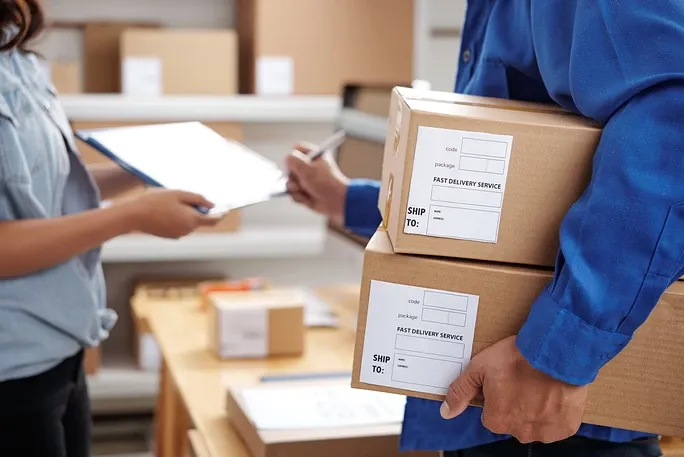Nobody likes to receive a package containing broken items. With more than 25 million packages shipped daily, however, accidents happen. Here are some guidelines for the best packaging for fragile items.
Packaging your items carefully and properly is the best way to make sure your fragile items arrive in the pristine condition in which you sent them.

1. Choose the Right Packing Materials
If you choose flimsy packing materials and don’t provide adequate padding, you can almost guarantee that your item will arrive broken. Start by choosing a heavy-duty box whose walls are at least 1/8-inch thick. A box that provides about 2 inches of space around your items provides enough room for adequate padding without running the risk of letting your item slide around during shipping.
Use plenty of cushioning material, such as bubble wrap, packing peanuts, or foam cushioning, to surround your fragile item on all sides. Uline a leading manufacturer of packing materials recommends, “a good rule of thumb is to have at least 2-3 inches of cushioning around the entire item.”
Bubble wrap is ideal for wrapping your fragile items, and you can use crumpled paper, air pillows, or packing peanuts around the items to keep them from moving during transit. Consider double-boxing, especially fragile items.
2. Wrap Individual Items Separately
Bubble wrap is your best friend when you’re shipping multiple fragile items in the same box. Wrap each item separately, surrounding it with a 3-inch layer of bubble wrap. If you’re shipping something with an opening (such as a china teapot), stuff the item with more bubble wrap or with crumpled paper.
Make sure the bubble wrap covers all the parts of each item — don’t leave that teapot spout sticking out, for example. Secure the bubble wrap with packing tape. Don’t place items on the floor of the box; instead, fill it with packing material first. Separate individual items with 2 to 3 inches of packing peanuts or other cushioning material so they can’t bump into each other during transit.
3. Seal and Label Your Package Correctly
Use sealing tape to completely enclose all open edges. Place your shipping label on the top of the box to help ensure it remains right-side-up. Finally, label the box clearly as “Fragile” on all six sides, including the bottom. Use a thick black permanent marker or a preprinted label to make sure the warning is seen.
Still Wondering about the Best Packaging for Fragile Items?
At Wanner’s Transport & Delivery, we treat your fragile packages with the extreme care they deserve. Whether you need a quick overnight delivery or reliable expedited shipping, contact us to help with your business deliveries throughout New Jersey, Pennsylvania, and Delaware.

